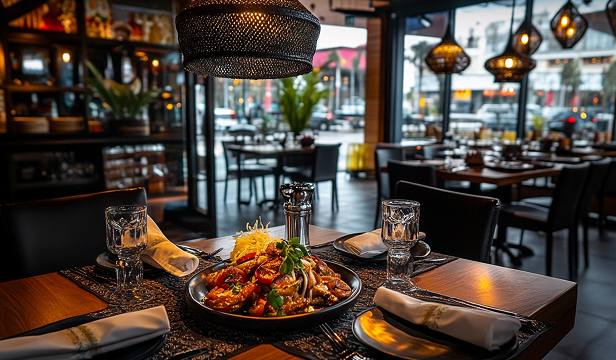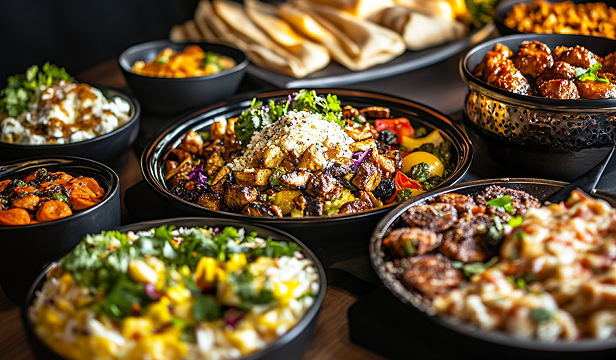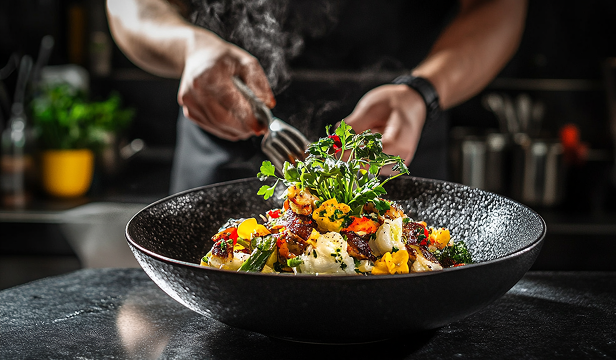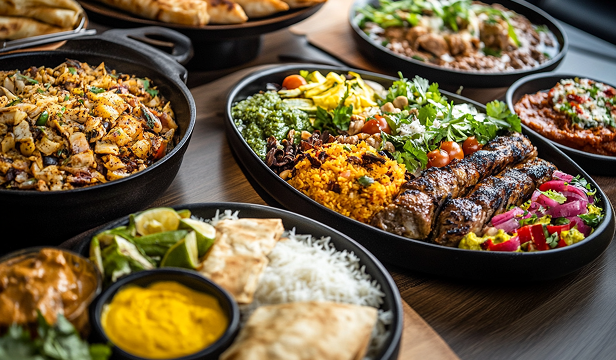Introduction Middle Eastern art is renowned for its intricate patterns, rich colours, and deep cultural…

Exploring Arabic Calligraphy in Restaurant Decor
Introduction
Arabic calligraphy is more than just an artistic form of writing—it is a profound expression of culture, heritage, and aesthetics. In recent years, it has gained popularity as a sophisticated and meaningful design element in restaurant interiors. From traditional fine-dining establishments to contemporary cafés, Arabic calligraphy brings a unique blend of elegance and authenticity to restaurant decor.
The Cultural and Artistic Significance of Arabic Calligraphy
Arabic calligraphy has been an integral part of Islamic art and culture for centuries, with styles ranging from Kufic and Thuluth to Naskh and Diwani. Its use in decor goes beyond mere aesthetics; it often conveys poetic verses, religious inscriptions, or philosophical reflections that enrich the ambiance of a space. The fluid, flowing strokes of Arabic script evoke a sense of movement and rhythm, much like the experience of a well-orchestrated dining service.
Enhancing Ambiance Through Calligraphic Design
The incorporation of Arabic calligraphy in restaurant decor serves multiple purposes:
- Creating an Authentic Atmosphere: Restaurants that specialise in Middle Eastern or North African cuisine use calligraphy to reinforce cultural identity, making the dining experience more immersive.
- Eliciting Emotion and Engagement: Carefully chosen inscriptions can inspire contemplation, nostalgia, or spiritual connection, enhancing the dining experience.
- Blending Tradition with Modernity: Contemporary interior designers experiment with calligraphy in new ways, such as abstract representations or neon installations, to appeal to modern sensibilities.
Applications of Arabic Calligraphy in Restaurant Decor
There are several ways in which Arabic calligraphy is integrated into restaurant design:
- Wall Murals and Feature Walls: Large-scale calligraphic murals create striking focal points in dining areas, often featuring classical poetry or religious texts.
- Furniture and Upholstery: Chairs, tables, and cushions with embroidered or engraved calligraphic patterns add a subtle yet stylish touch.
- Lighting Fixtures: Arabic calligraphy etched into lamps or lanterns produces a mesmerizing interplay of light and shadow, setting a warm and inviting tone.
- Tableware and Menus: Plates, cups, and menu covers adorned with calligraphy create a cohesive visual theme that extends from decor to dining.
- Exterior Signage: Many restaurants incorporate calligraphic signage to establish a strong visual identity that sets them apart.
Famous Examples of Arabic Calligraphy in Restaurant Interiors
Several renowned restaurants and cafés worldwide have successfully integrated Arabic calligraphy into their decor:
- Qbara (Dubai): This high-end restaurant features stunning wall panels with intricate Arabic script, creating a luxurious yet culturally rich atmosphere.
- Mamnoon (Seattle): A modern Middle Eastern restaurant that blends contemporary aesthetics with traditional Arabic typography in its interior design.
- Dar Yacout (Marrakech): A historic restaurant that incorporates classical Moroccan calligraphy in its architecture and decor, immersing diners in a bygone era.
The Future of Arabic Calligraphy in Restaurant Design
As global appreciation for Arabic calligraphy grows, its applications in hospitality design continue to evolve. Designers are experimenting with new materials, digital projections, and interactive installations that push the boundaries of traditional calligraphy. The fusion of this ancient art form with contemporary design trends ensures that Arabic calligraphy remains a timeless and innovative element in restaurant decor.
Conclusion
Arabic calligraphy offers a unique and captivating way to enhance restaurant interiors, bridging the gap between art, culture, and dining. Whether through grand murals, subtle furnishings, or modern digital interpretations, this timeless art form continues to inspire and elevate the aesthetic appeal of culinary spaces around the world.



